













The magazine of the art-form of the photo-essay
“A free, really high quality photo-essay magazine. Fabulous!”
Stephen Fry. British actor, writer and film & documentary maker

Sept 2014 back issue

by Billy HC Kwok




Eight hours away from the bustling capital, Phnom Penh, this Khmer village lies close to the Thai border.
As the location of the last military base to where the Khmer Rouge soldiers retreated, this village has been left with a
marginalized population. As well as on-going landmine eradication, the village has many other issues ranging from
rural poverty to HIV and drug problems.
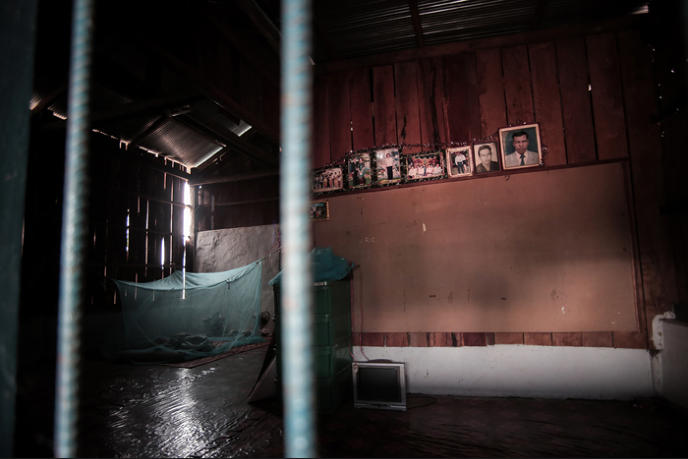
The village chief is comparatively more well-off than other residents in the village. His house is larger and he even runs
his own store. Here inside the house, his photos are pasted on the wall.
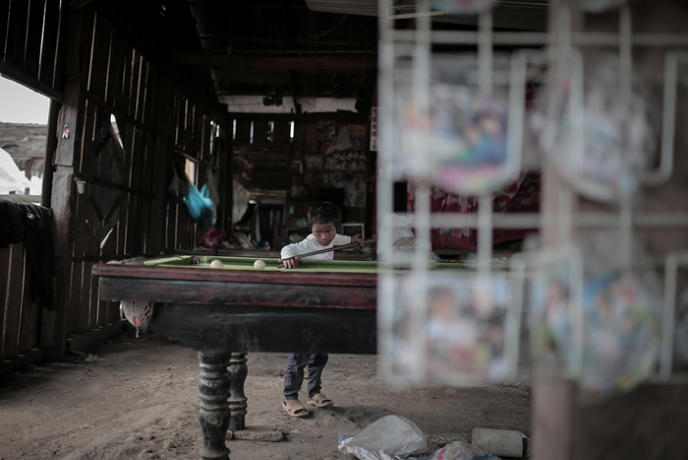
Children from neighbouring villages gather here for a round of snooker, the most luxurious game in the area.
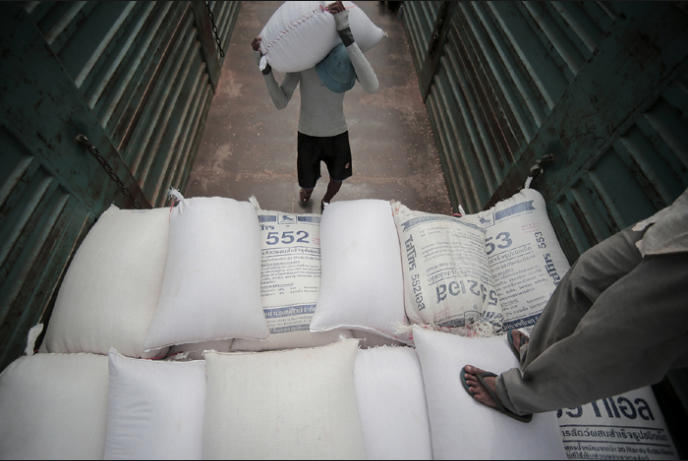
Harvest season in Cambodia. Workers carry bags of corn onto the truck, ready to be sold at market. They receive less
than USD0.25 with every 20-litre bucket filled with peeled corn.
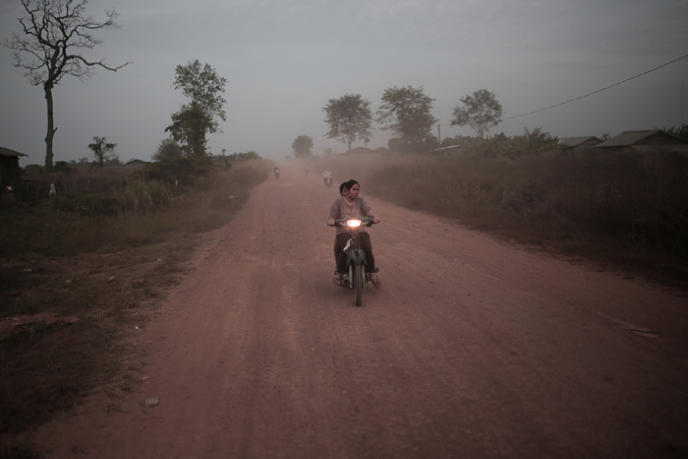
Eight hours away from bustling capital Phnom Penh, this Khmer village lies close to the Thai border. Transportation is
always difficult, partly due to the sand and dust in the air.
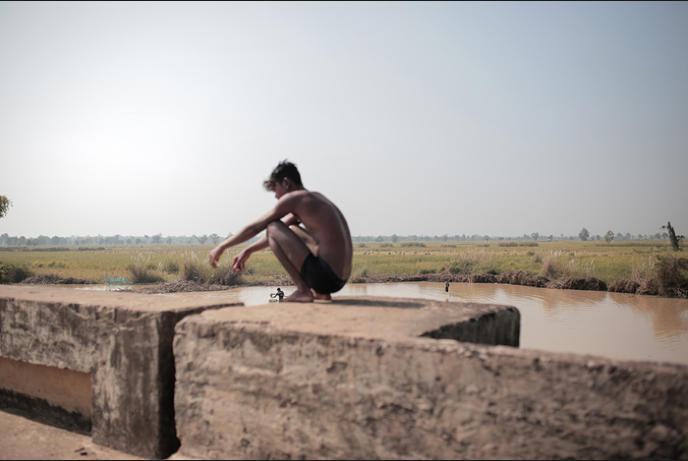
During the summer in Cambodia, the temperature can reach up to 40 degrees celsius. The heat and the dryness make
water extremely important to villagers. The pond where they fish, get water and play.
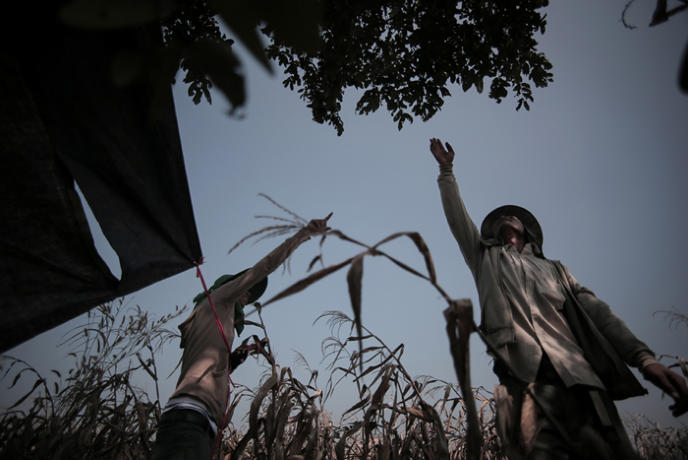
Noon. The villagers rest after working hard in the fields.
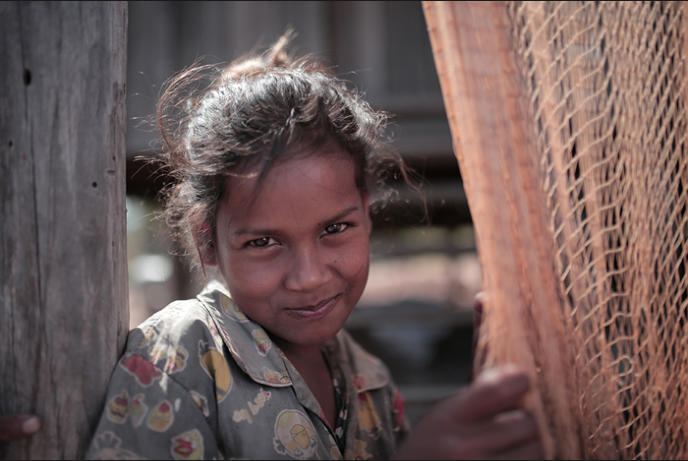
The extreme weather in Cambodia is marked by dry summer seasons that can reach up to 40 degree celsius, and the
overflow of rainfall during monsoon seasons, which can sometimes devastate remote villages with floods. Inside this
house hangs a fishing net, waiting for the rainy season when it will be used to capture fish.
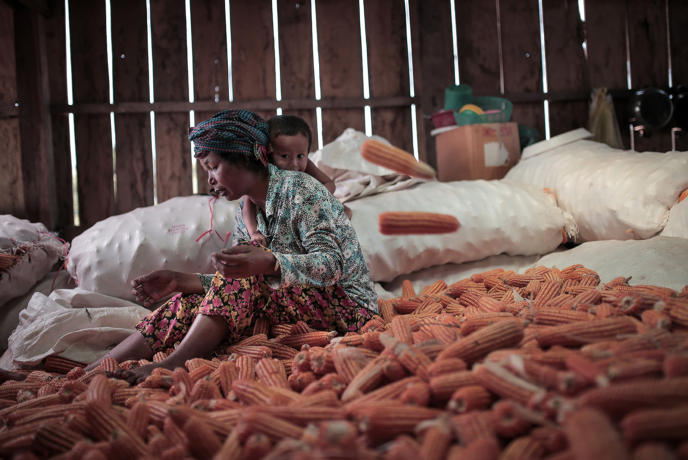
A shy boy hides behind a hardworking mother as she peels silk off the corn. Most of the families rely on the corn
harvest to make ends meet. She receives less than USD0.25 with every 20-litre bucket filled with peeled corn.
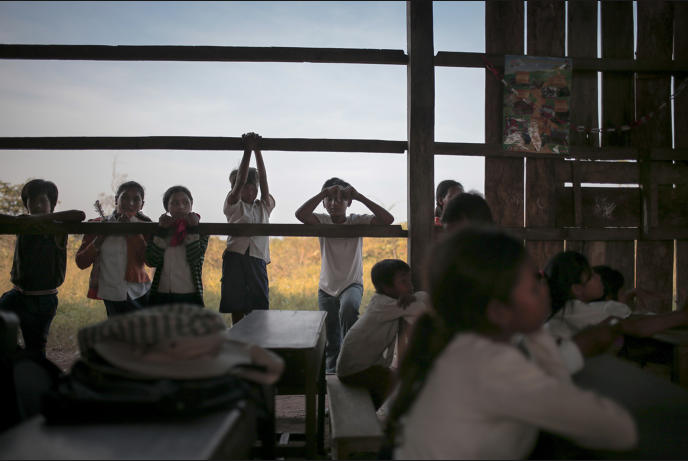
This is the one and only government school in the village, consisting of one classroom and employing just one teacher.
While the more junior students attend class, the senior students hang outside the classroom, listening to the lectures.
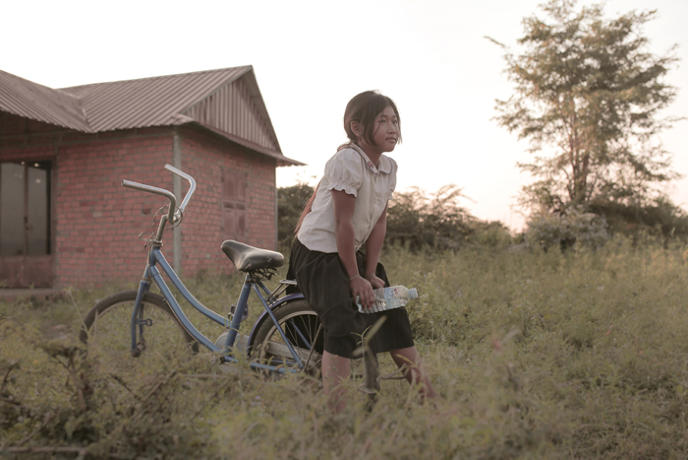
Adolescent girl with her bicycle, waiting outside the government school. She is one of the few students in the school to
own a bicycle.
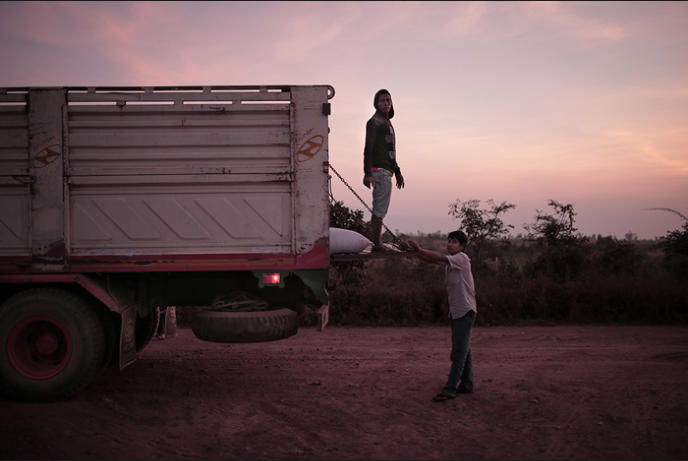
Workers collecting the corns. Trucks with bags of corn to be sold at market as chicken feed.
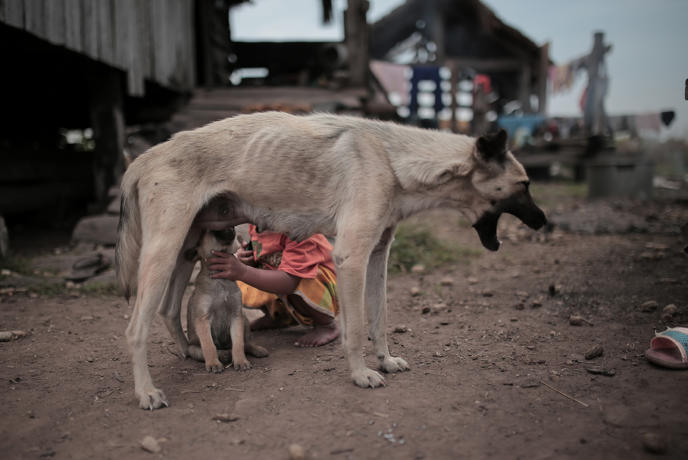
Mother and child.
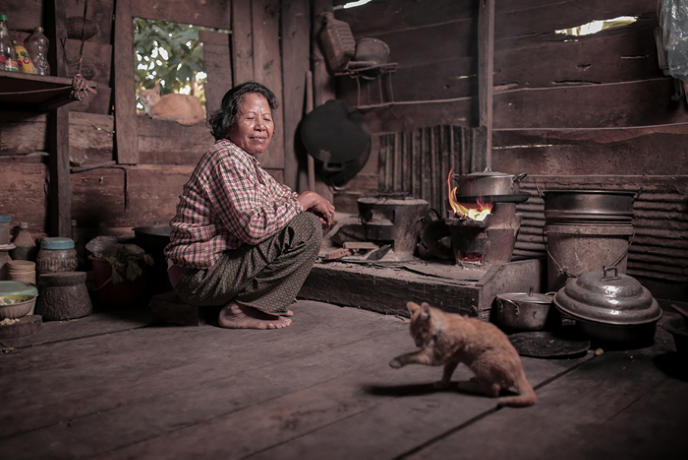
She is the only witch doctor of the village and uses her own indigenous methods to treat the villagers. During her
spare time, she looks for herbal medicine in wilderness, which she later prescribes to her patients.
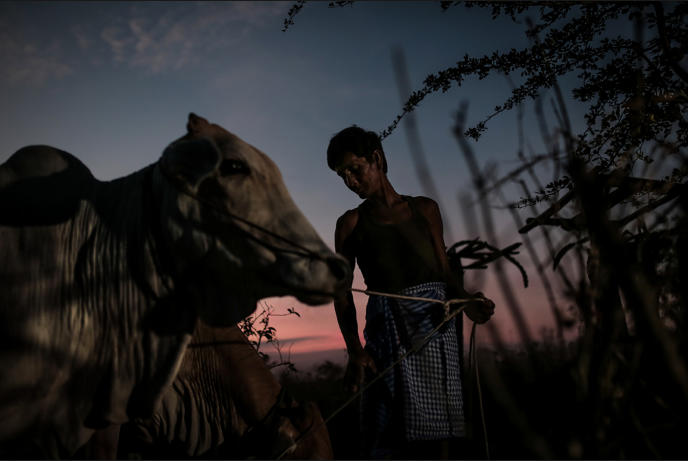
The witch doctor’s husband. While other villagers grow corn and cassava, he grows fruits in the backyard, and also
some plants purely for viewing pleasure. He is one of the very few villagers to possess a cow. He takes it around for
strolls during his spare time.
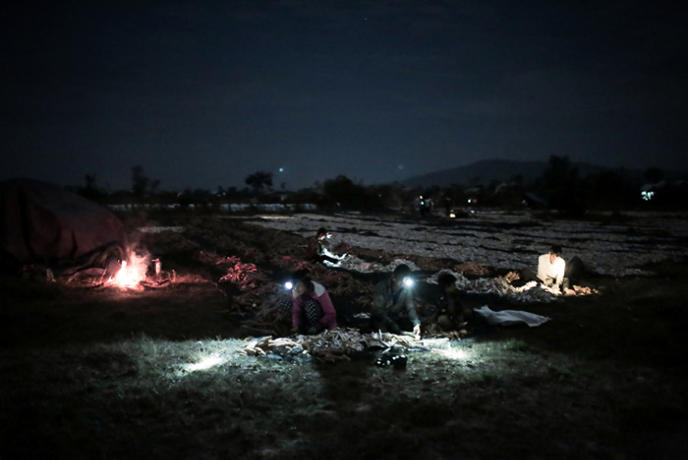
Workers chopping cassava until midnight. Some of them come from nearby villages to find work here. There are two
types of crops - corn and cassava. Corn is sold for a higher price but its market fluctuates. The cassava market is
more stable. During the harvest season, the cycle of chopping cassava from morning until late at night can take up to 3
months. Last week, a young male worker from a neighboring village passed away at night in the cassava field due to
the cold. Two days later, his body was transported back to his village for cremation.
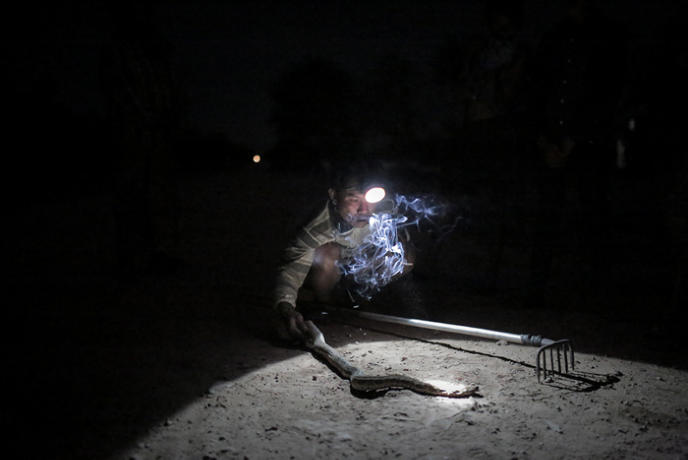
Very often, villagers discover large snakes on the road. They are caught, and then eaten.
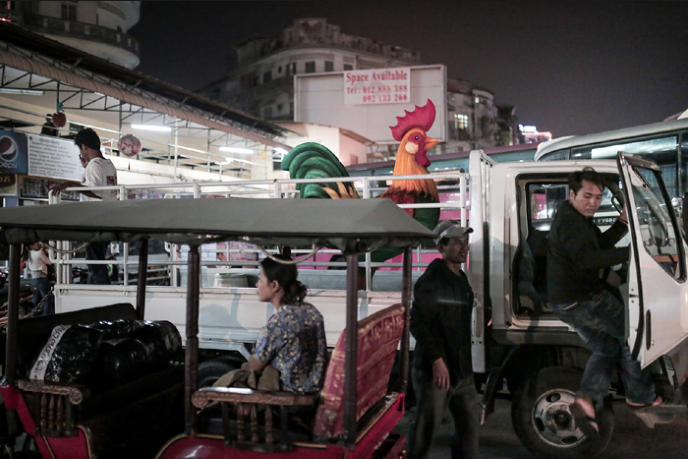
The market at Battambang is 2.5 hours away and provides the villagers with all their needs. However, most of the
villagers can not affort the extremely expensive transportation, only a few of them are able to come once every two or
three weeks.
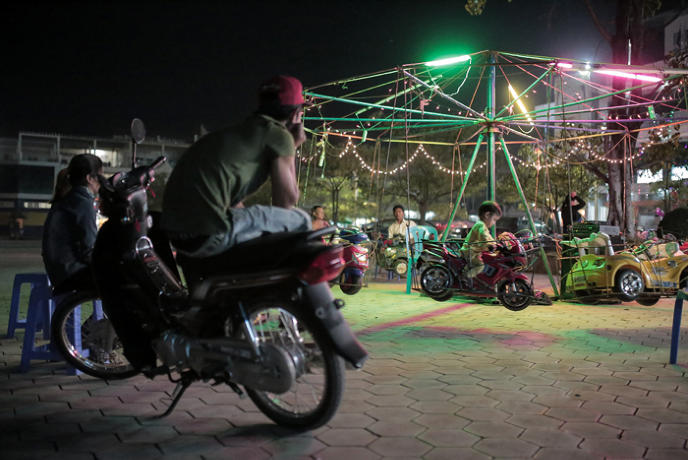
Businessmen transport a variety of entertainment, games and facilities to the villages. Sometimes children in villages
use their limited pocket money to play on this merry-go-around, however most of time they can only watch from the
sides.
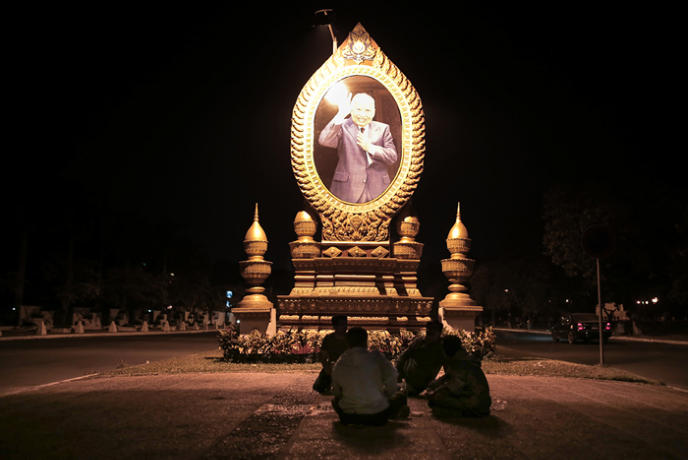
On the streets. People enjoy drinking and chatting with friends after a full day’s work.










